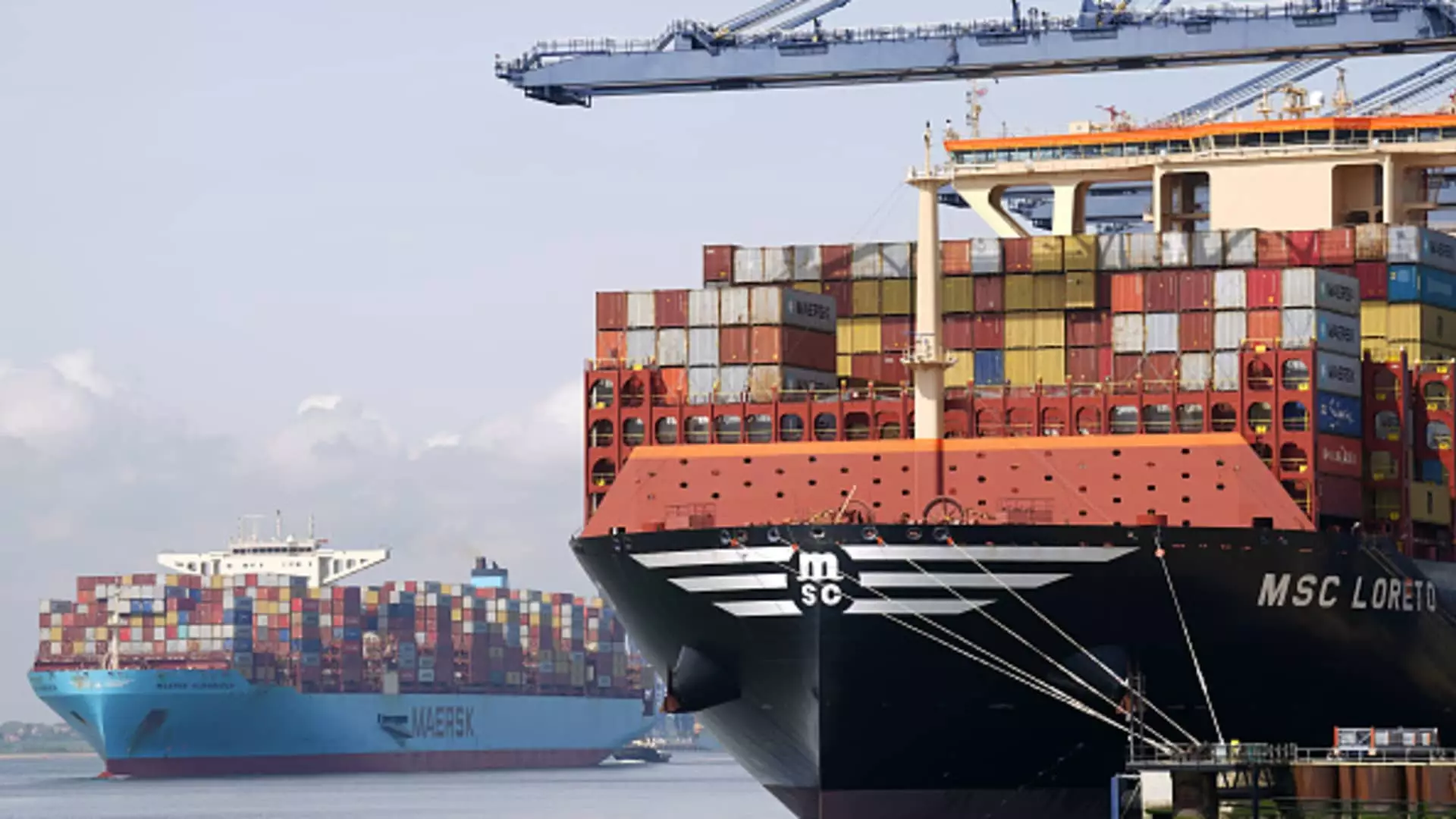As we step into the first quarter of 2025, investors find themselves in a precarious position, grappling with an overwhelming atmosphere of uncertainty. The primary catalyst for this unease is the U.S. tariffs initiated under President Trump’s administration, which have morphed into a significant source of anxiety for market players. The initiatives implemented in April were not only extensive but also contradictory, creating a confusing landscape of trade policy that challenges even the most seasoned analysts. The cascading effect of these tariffs is palpable, leaving companies—especially those in Europe—wondering how to proceed in this turbulent economic climate.
In a world that thrives on predictability and stability, the erratic nature of these tariffs contributes to an unprecedented level of anxiety. Negotiators from both the EU and the U.K. are scrambling to mitigate the impact of blanket tariffs, yet the continual imposition and retraction of duties only serve to heighten volatility. The larger question on everyone’s lips remains whether the escalating tensions between Washington and Beijing will culminate in full-scale trade warfare, which would undoubtedly send shockwaves through the global economy.
Corporate Responses to Tariff Turmoil
In this unforgiving economic landscape, major corporations are beginning to reveal the challenges they face through recent earnings reports. Luxury powerhouse LVMH has warned that sectors of its business—including beauty and wines—are particularly susceptible to significant spending pullbacks from “aspirational clientele.” This sentiment reveals a harsher reality: consumer confidence is likely to wane under the oppressive weight of tariffs, casting a long shadow on sectors accustomed to robust growth.
Not to be overlooked, semiconductor giant ASML has voiced similar concerns. As a linchpin in the technology sector, ASML’s predictably stable demand is now shrouded in “new uncertainty,” as tariffs disrupt market dynamics. The uncertainty swirling around these high-profile earnings reports is a clear signal to investors: the stakes are high, and the outcome unpredictable.
Dangers Ahead for Global Shipping
As the economic landscape unfolds, one of the sectors poised for dramatic fluctuations is the global shipping industry. Maersk, the Danish shipping giant often seen as a bellwether for trade, is expected to unveil its earnings on May 8. Recent economic discourse indicates that Maersk’s earnings before interest, depreciation, taxes, and amortization (EBITDA) could plummet to $2.3 billion from $3.6 billion reported in the previous quarter. This stark decrease is alarming, especially as analysts point to Trump’s tariffs as a significant contributor to these challenges.
Maersk’s assertion that the U.S. tariffs are “not good news” underscores a larger truth: a chaotic trade environment severely undermines stability in global commerce. The ramifications of such turmoil extend beyond shipping; they threaten economic stability at large, leaving nations and companies at a crossroads. The uncertainty surrounding international trade looms larger than ever, leading many to question whether any immediate resolutions will materialize, or whether ongoing upheaval is the new normal.
Fueling the Fears in the Energy Sector
Moreover, the energy sector is not immune to these waves of instability. Shell is scheduled to report its earnings soon, following a March announcement aimed at enhancing shareholder returns while simultaneously cutting costs. However, it is essential to understand the pressures coming from a tumultuous oil market exacerbated by tariffs and recession fears. Analysts have already begun bracing for lower earnings, signaling a potential drop from $7.73 billion to $5.14 billion year-on-year. The uncertainty in oil prices, heightened by geopolitical theatrics, leaves stakeholders in a continuous state of apprehension.
Hargreaves Lansdown aptly captures the dilemma facing Shell: despite their excellent track record in capital allocation, the impacts of fluctuating oil prices remain outside their control. Tariffs only complicate the landscape further, thrusting volatility upon an already fragile sector. As energy giants navigate a landscape plagued by uncertainty, it becomes apparent that adaptability may be a corporation’s best asset moving forward.
The Automobile and Airline Industries: Caught in Crossfire
Significant challenges extend into the automobile sector as well, particularly for German manufacturers like Volkswagen. Compounding tariffs threaten profitability as foreign cars face steep charges upon entering U.S. markets. Analysts now speculate how much strain U.S. operations will experience from both manufacturing and supply chain perspectives. With the pressure mounting, Volkswagen is bracing for an earnings report that will likely fall short of expectations, showcasing a decrease in earnings before interest and taxes.
Meanwhile, the airline industry is not sitting idly by as geopolitical tensions escalate. Lufthansa anticipates revenue growth amidst changing consumer behavior, though public sentiment towards the U.S. is notably icy. With significant drops in transatlantic bookings reported, it is unclear how long these trends will last, leaving airline executives and investors equally anxious about future profits. The convergence of diplomatic strife and economic consequences leads to a precarious situation that demands immediate attention, yet resolves remain elusive.
In this unexpected economic climate, as U.S. policies rattle international markets and provoke a variety of reactions, it’s clear that the repercussions will be felt far and wide, reshaping industries and investor confidence alike.


Leave a Reply